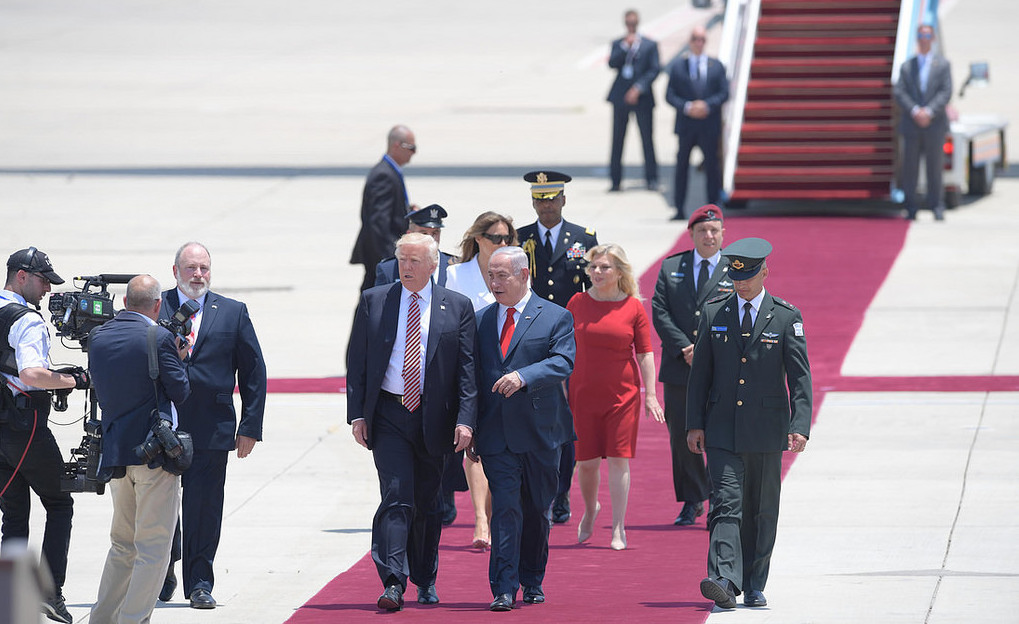Canada was selected as the site of a first presidential foreign visit for U.S. presidents Harding, Roosevelt, Kennedy, Johnson, Reagan, Bush Sr., Clinton and Obama.
When Governor-General Michaëlle Jean greeted U.S. President Obama on the tarmac at the Ottawa airport, she told him how popular he was in Canada. It was good to know that, he responded with a smile, as when things got really bad at home, it would be nice to be welcome in Canada.
Nothing like that will ever be said by U.S. President Donald Trump, who took off last Friday for a nine-day trip abroad that did not begin with (or include) a stop in Canada.
Trump took a trip to distract from his problems at home.
The Trump journey began in Saudi Arabia where he signed off on a $110-billion arms sale, representing a new “strategic vision” shared with the Petrol Kingdom. Travelling with 50 U.S. CEOs, the president announced joint ventures and cross-border investments that totalled some $200 billion over 10 years.
Asset manager BlackRock, adviser to the Trudeau government on its proposed infrastructure bank, announced it had recruited $20 billion from Saudi sovereign wealth sources, for a projected $40-billion American infrastructure fund to upgrade U.S. assets.
Pushing a familiar theme of fighting terrorism, the U.S. president met with six Gulf state heads of government on Sunday, and in an effort to counter his Islamaphobic immigration policies and campaign statements, also addressed a conference of 40 Arab and Muslim leaders on the need for religious tolerance.
For Saudi Arabia, the Trump visit signals a renewed partnership based on common concerns such as counter-terrorism, defeating ISIS, and Iranian support for the Syrian regime.
Saudi Arabia had been unhappy with the Obama administration when it signed a nuclear reactor agreement with its rival Iran, a deal Trump had denounced.
The Saudis were looking to get Trump to tilt against Iran, and enlist further U.S. support for the Saudi regional war in Yemen where Iran is active on the opposing side.
The American president did not raise human rights concerns or criticize the killing of civilians in Yemen by Saudi forces.
Trump was in Israel to meet and then dine with the Israeli prime minister Monday, as well as touring sites such as the Wailing Wall (the man is known to like walls) and meeting prominent Israelis. On Tuesday, Trump was slated to see the president of the Palestinian Authority.
In his election campaign Trump pledged to move an Israel-Palestine peace accord further ahead than any U.S. president before him. After reportedly sharing sensitive Israeli intelligence with the Russian foreign minister, Trump will be satisfied to receive some acknowledgement from the Israeli prime minister that he is a trusted leader.
For the rest of the week his schedule reads: greeted by the Pope in Rome Wednesday; visit EU headquarters in Brussels, have lunch with the new French president and attend a dinner with NATO leaders Thursday; and participate in a G7 summit in Sicily Friday and Saturday.
The Trump trip ends after a Saturday visit to American troops at their base in Sicily.
This kind of schedule is fairly routine for the “leader of the free world” as Americans style their president, but for Trump it amounts to an attempt to show himself fit to be president.
Trump will go on the offensive with NATO leaders, calling for more military spending. Justin Trudeau, for one, has already indicated Canada has no intention of contributing more proportionately to NATO than it already does.
Prior to the G7 gathering in Sicily, Trump will have already met with the six other heads of government in attendance: Abe of Japan, Merkel of Germany, May of the U.K., Gentiloni of Italy, Macron of France, and Trudeau.
G7 leaders will know that Trump and his Commerce Secretary Wilbur Ross have expressed their distaste for the World Trade Organization and multilateral trade agreements, preferring to negotiate bilaterally where they can exercise their superior power.
On the campaign trail, the U.S. president made it crystal clear he was going to end NAFTA, the American jobs killer. Last week U.S. Trade Representative Robert Lighthizer notified Congress of the U.S. intention to renegotiate the 20-year-old agreement.
In its trade relations with Canada, the Trump administration wants to target currency manipulation and foreign currency rates will be an American theme at the G7.
The Trudeau government cannot be too disappointed that Donald Trump decided to break with tradition by not visiting Canada first.
Not only Trump is distinctly unpopular in Canada, Team Trudeau has no recipe for dealing with a White House under siege and bent on singling out others for blame.
Duncan Cameron is former president of rabble.ca and writes a weekly column on politics and current affairs.




